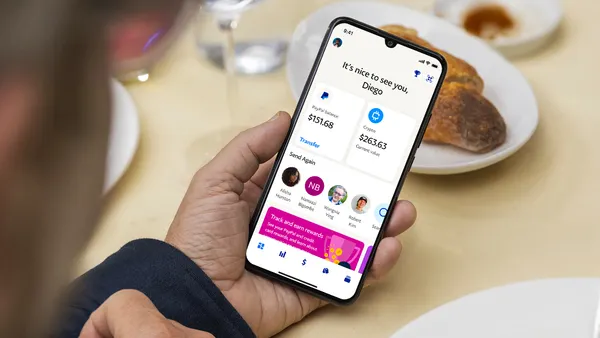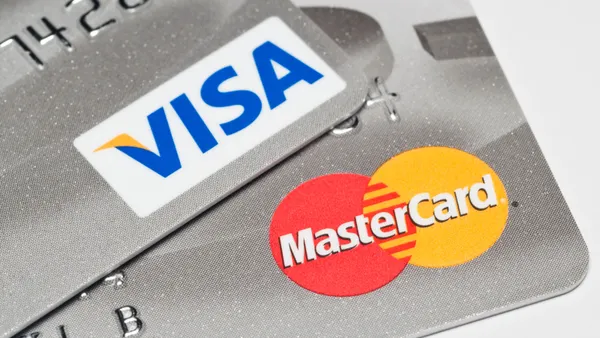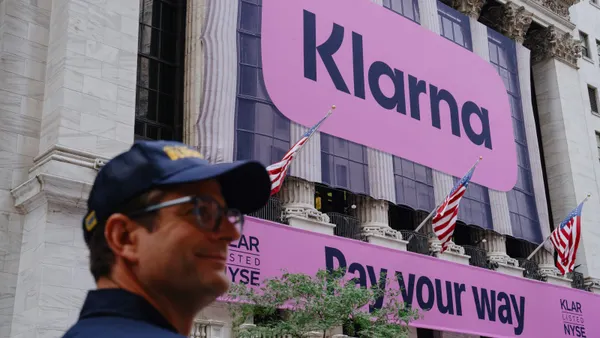Dive Brief:
- PayPal plans to raise U.S. merchant fees to 3.49% per digital payment transaction, from 3.40% currently, on Aug. 2 for U.S. commercial transactions, including PayPal checkout services and Venmo services, the company said in a June 18 blog post and a separate fee policy notice on the same day.
- Meanwhile, the pioneering 23-year-old digital payments company, will increase credit and debit card payment rates to between 2.59% and 2.99%, depending on whether certain chargeback protections are included, the blog post and notice said. Fixed fees on international transactions will increase for most currencies, according to the June 18 PayPal fee policy notice.
- For consumers, PayPal said it plans to cut the fees on domestic donation transactions to 2.89% but increase fees for “instant” withdrawals from bank accounts and from cards to 1.50% of the transferred amount, the fee policy notice said.
Dive Insight:
PayPal’s rate increase comes despite a proliferation of new digital payment channels in recent years as financial technology startups target their digital innovations at the way consumers make payments. With the jump in e-commerce activity during the COVID-19 pandemic, rival payment methods won new customers.
Major established competitors like Square and Google Pay have been attracting more users and younger startups like Stripe and Payoneer are raising new capital to build their businesses as well. In a June 18 report, Reuters called PayPal’s increases a “bold move in an increasingly competitive digital payments sector.”
In explaining the rate increases, PayPal said in a separate blog post that the fee boost was justified by the many features that it's added to its tools, specifically new analytics and fraud services as well as other payment options such as buy now-pay later. "As PayPal has been evolving our business alongside our merchant business partners, we have accelerated the rollout of products, features, and capabilities, delivering more benefits than ever before," the company said in the June 18 blog post.
Card companies Visa and Mastercard have had difficulty increasing merchant interchange fees in the U.S. this year because of pushback from merchants and their political champions, though they’ve had more success internationally.
During its February quarterly earnings call, PayPal warned that its total payments volume growth may slow this year, relative to the record 31% increase to $936 billion that it logged last year, Bloomberg reported.
The company said at that time in a press release that its annual revenue jumped 21% last year to $21.45 billion over 2019, and net income climbed 71% to $4.2 billion.
Speaking at a Bank of America conference earlier this month, PayPal CEO Dan Schulman provided a view of what the company is experiencing so far this year with respect to adding and retaining new merchant and consumer users.
“We’re seeing consistent demand for our services, maybe even growing demand,” Schulman said in the conversation with a Bank of America analyst. “Our marketing is finally starting to kick in in ways that we can really measure.”
Schulman said PayPal aims to make the brand more available as a payment option in stores too, though he noted that will take time, in a multi-year process that includes integration with point-of-sale systems.
“It’s clear that payments are becoming digital, whether they be offline or online and it’s clear that retailers are looking at things now in a fundamentally different perspective,” Schulman said in that June 9 conversation. “They are not dividing things into online or offline.”










